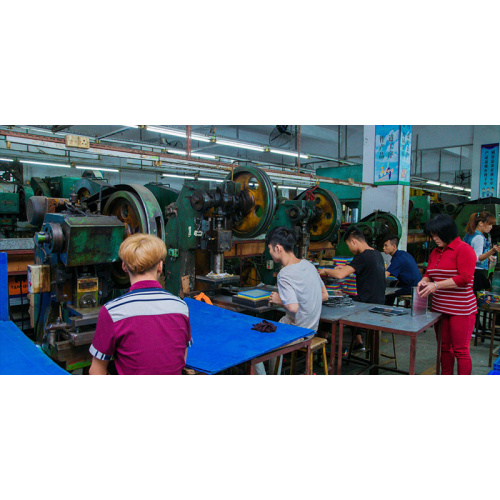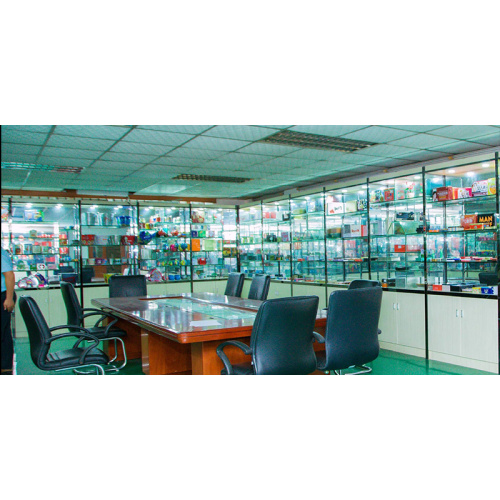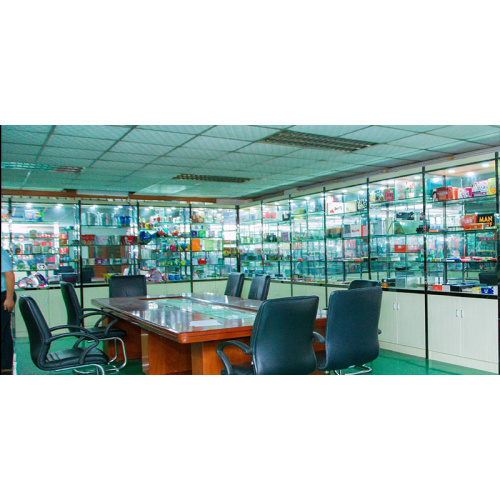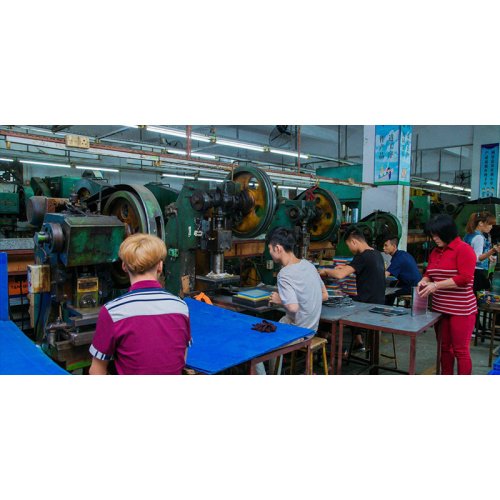[China Packaging Network News] Metal materials are one of the oldest materials discovered and used by humans. In China and some developing countries, they still dominate the material industry. Metal materials are one of the four commonly used packaging materials. With the development of modern metal container molding technology and metal plating technology, it plays a pivotal role in the packaging materials industry. The following describes the characteristics and performance of thin steel plates commonly used in the production and processing of food packaging containers.
At present, the steel used for packaging is mainly thin steel sheet, which can be divided into hot rolled steel sheet and cold rolled steel sheet according to rolling method. The steel sheets used for packaging are mostly thin steel sheets obtained by hot-rolling ordinary carbon steel and ordinary low-alloy steel. In order to enhance the corrosion resistance, plating treatment is usually required on the surface. According to the difference of the plating metal, it can be divided into three kinds: tin plated steel plate, chrome plated steel plate, and galvanized steel plate.
Tin plated steel sheet
Tinplate is commonly referred to as tinplate. It is a low-quality thin steel plate with tin plating on the surface. It is called hot-dip tinplate with hot-dip coating and tin plating with electroplating. The corrosion resistance of the steel plate after tin plating is enhanced, and the ductility and processability are further improved. This is because the steel plate is tin-plated and a dense tin-iron alloy is formed between the inner steel and the outer tin. This thin alloy has good corrosion resistance. The pre-plated nickel steel sheet developed in Japan, in addition to improving the original plate welding
Receptivity also improves the corrosion resistance and paint adhesion of the original board. In addition, there is a chrome-plated tin two-layer steel plate that is first plated with a layer of metallic chromium (100 mg/m2) and then plated with tin (0.1-0.3 g/m2) on the original plate. This steel plate has good weldability and corrosion resistance, reduces painting cost, and can be baked at high temperature for a short time. The special tinplate tin plating process adopts the method of insoluble anodizing. The process is simple, the efficiency is high, the coating is even and firm, and the positive and negative plating can be realized with different thicknesses, so as to effectively avoid the phosphoric acid caused by the acid pickling caused by the hot dip plating. The discharge of toxic waste water from chromium can save the cost of wastewater treatment and reduce the pollution to the environment.
Tin-plated steel plates are often coated on the inner side of the finished container, that is, on the side where the article is in contact with the product, and the food and other contents are packaged after drying. The coating is dense and uniform and has good adhesion to the surface of the tin plate. It is not easy to fall off and damage during the processing. The raw materials of this coating are mostly epoxy resin, phenolic resin, etc. It is non-pollution to food, harmless to human body, and has good corrosion resistance, can prevent deterioration of oil and medium in food, thus effectively protecting the quality of food. . Tinplate cans are welded using high-frequency resistance welding technology, which can reduce pollution and improve welding quality.
The most important feature of tinplate is anti-corrosion, easy processing, can be punched into shape, but also welding processing, easy to install and print, and non-toxic and harmless, so it is suitable for packaging of various foods, beverages and medicines. Currently, it is mainly used for canning. Food packaging materials.
In recent years, the French steel company first developed a new type of tinplate for packaging and put it into the market, causing a revolution in the packaging industry. According to the different requirements of the packaging industry, the thickness, tin plating amount, and mechanical properties of tinplate materials all have different needs. At present, the thickness of materials used to make three-piece cans in Europe is 0.13mm to 0.21mm, which not only saves steel and reduces costs, but also eliminates all aspects of product requirements. From the statistics of European countries, due to the reduction of material thickness, companies can obtain 20% of the revenue, which is much higher than the reduction of the price of cans by 3% to 4%. Currently, French tinplate production accounts for 40% of the European market, and is growing at a rate of 8%. The main reason for this is the development of special materials for different uses. In Europe, some can-making enterprises have started to produce tin cans, but the equipment has not changed much, and the production equipment for two-piece cans is still used. With steel aluminum cans, the cost can be reduced by 15% to 18%, and the mechanical strength of cans can be increased by more than 60%.
At present, the development trend of packaging tinplate is to reduce the thickness of the material and improve the mechanical properties of the material. The main types of tinplate products for packaging include tin tin cans for tanks, tins for spray cans and tins for cosmetic cans, tinplates for closure caps and crown caps, tinplates for coatings and chemical product containers, tinplate tins for two-piece cans, and tinplates for special-purpose packaging.
1. Tin cans for beverage cans. This kind of tin can for beverage cans is characterized by high purity, no impurities, and more corrosion resistance; the drawing width can reach 1200mm; the shape is very regular, and the dimensional error is small; continuous annealing provides good toughness. On the basis of ensuring the good performance of the tinplate, it can greatly reduce its thickness, so that the tinplate has superior mechanical properties and plasticity.
2. The food cans are made of horse iron. At present, European series of tinplate can be used to produce a variety of different types and shapes of food cans. These tinplates are mainly coated with tinplate (a tank bottom for a DRD-coated tank), tinplate for easy opening, and tinplate for an extension tank. Among them, tinplate for producing ultra-thin cans and crown caps makes it very safe to open the bottle.
3. Spray tins and tins for cosmetic jars. Tinplate for packaging is suitable for the manufacture of high-pressure spray cans, making this container in compliance with international standards and harmless to the environment.
4. Tinplate for paint and chemical product containers. Because packaging tinplate has excellent impact resistance and flame retardancy, packaging containers and paints using these packaging containers not only meet the relevant regulations for the transportation and storage of toxic substances, but also allow manufacturers to save a lot of insurance costs.
5. Tinplate for special purpose packaging. Tinplate for special purpose packaging has good printing properties and is most suitable for the printing of various shapes of containers.
Chrome plate
The chrome-plated low-carbon steel plate is called a chrome plated steel plate. This is a newly developed tin plate substitute material for reducing the amount of tin and reducing the production cost. It is also called a chromium-free tin plate or a tin-free plate. Chrome plating is poor in corrosion resistance and must be applied after coating. The chrome-plated plate after the coating is applied has a large adhesion force to the coating film, and is suitable for manufacturing the bottom lid and the cupping tank of the food tank. Wuxi steel plate has the following advantages and disadvantages compared to tinplate:
1. The advantages of Wuxi steel
(1) Low plating, so the cost is relatively low
(2) Coating adhesion is good. The surface oxide film is honeycomb and contains -OH and other genes, so the adsorption and wettability of the coating are very strong. It is twice or more than 5 times the adhesion of the same kind of paint on tinplate, and the tinplate will not appear easily. Leaked fish eyes or craters.
(3) The temperature resistance is good and there will be no phenomenon of low-temperature "tin epidemic" in tinplate.
(4) High sulfur resistance and high alkali resistance. Because chromium and chromium oxides do not react with sulfur and alkali, they have very good sulfur and alkali resistance properties, do not cure black, and it has good corrosion resistance to the atmosphere, organic solvents, oils, etc. .
2. The shortcomings of Wuxi steel plate relative to tinplate
(1) The chromium layer is poor in spot weldability, requiring special welding equipment or welding after removing the chromium layer. Generally, the seam welding of the can body is performed by means of fusion bonding and bonding. (2) When the oxide film is thick, the ductility deteriorates. (3) Poor anti-corrosion and anti-corrosion, generally need to be coated with high acid-resistant coating before it can be used in weak acid environment.
The chrome plating process of the tin plate adopts a low-concentration two-step plating method, which not only reduces the consumption of chromium, but also reduces the amount of wastewater treatment, which is beneficial to reducing the environmental load. The coating is thin and uniform, and the cost is low. Chrome plate is currently the main domestic application range for beer caps, beverages, neutral food cans coating cover, as food cans are still few. In foreign countries, a large number of foreign coated tin plates are used as fish meat cans, especially two-piece cans, which give full play to the superior anti-sulfur blackening properties of Wuxi plates and the advantages of strong paint adhesion.
Galvanized steel
Galvanized steel sheet, commonly known as tin sheet, is a low carbon steel sheet with galvanized surface. The galvanized layer is a protective coating that protects the steel plate from atmospheric corrosion during use. The galvanized layer is usually passivated. Passivation film formed after passivation in chromic acid or chromate solution is not easy to interact with moist air, so the anti-corrosion ability is strong. However, zinc is easily soluble in acids or alkalis and reacts easily with sulfides, so it is not suitable for packaging acidic, alkaline, or sulfide products.










